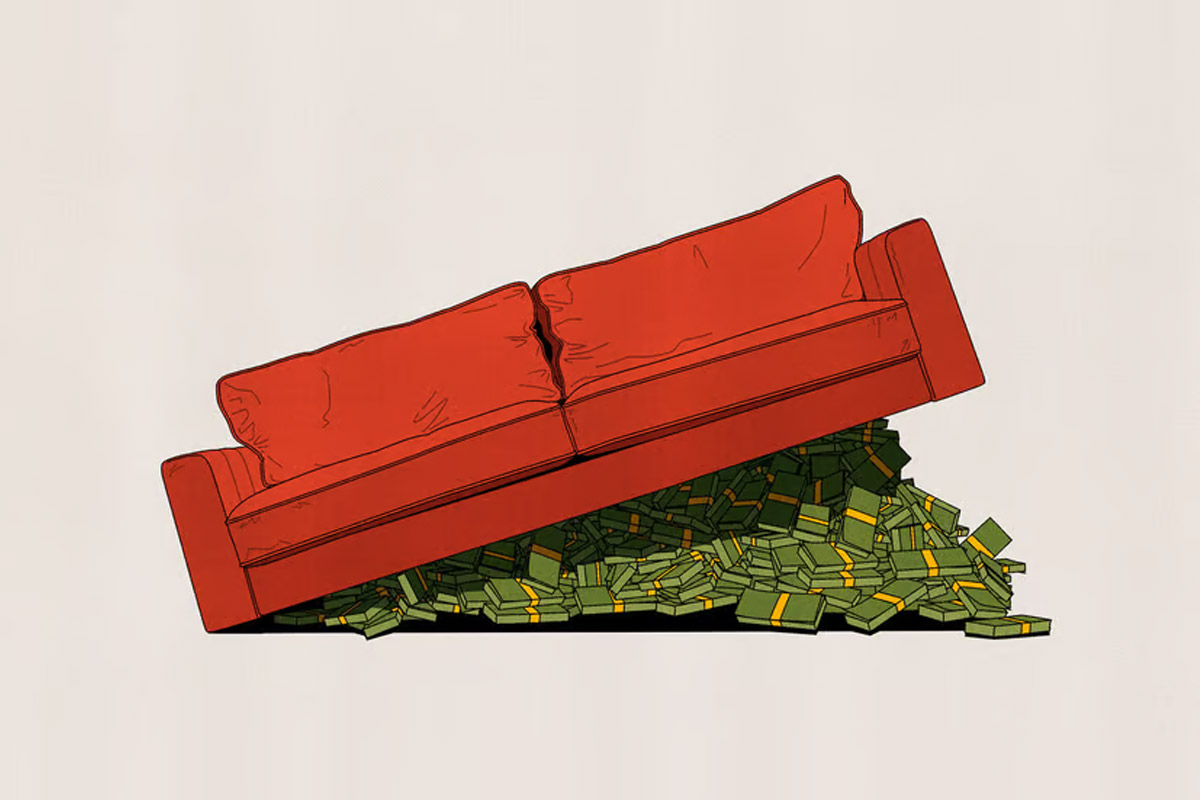Many people have experienced the joy of finding some spare change down the back of the sofa. On May 30th the World Bank experienced something similar, if on a grander scale. After rooting around in 176 countries, it discovered almost $7trn in extra global gdp—equivalent to an extra France and a Mexico.
In fact, there may be a better analogy. What the World Bank discovered was not additional money to spend, but the equivalent of a discount voucher, which cuts 4% off the price of every good and service the world buys in a year. That means global spending can stretch further than previously thought.
To understand why, it helps to carry out a thought experiment. Imagine that the many countries of the world all produced only one thing: Big Macs. In calculating the gdp of these economies, their national accountants would use market prices. America might, for example, value Big Macs at $5.69 each (the average price across big American cities, according to McDonald’s). If it produced a hundred in a period of time, its gdp would be $569. In adding up the size of the world economy, it would make sense to use the same prices in all countries. If a rival economy produced 125 burgers, its measured gdp should be 25% higher.
Unfortunately, that is not how these calculations often work. America’s national accountants value the country’s Big Macs at American prices. China’s value theirs at the yuan price prevailing in their economy, which is around 25 yuan. When making international comparisons, China’s gdp is then converted into dollars using the market exchange rate of roughly 7.2 yuan to the dollar. The result is that China’s Big Macs are valued at only $3.47 in calculations of global gdp and not $5.69. Even if China and America produced the same number of Big Macs a year, China’s output would seem almost 40% smaller by conventional measures.
There is an obvious solution: ignore the currency markets and look at prices instead. If the yuan price of a Big Mac is roughly four times the dollar price, why not use that as the exchange rate? If China’s gdp were converted into dollars at 4.39 yuan to the dollar, its Big Macs would have the same value as America’s. These alternative exchange rates, which equalise the prices of goods and services, are known as purchasing-power parities, or ppps.
Owing to this newspaper’s long-running Big Mac index, we can calculate parities for McDonald’s burgers. But they are only one product, however tasty, in the cornucopia of global capitalism. To carry out a similar adjustment across national economies, it would be necessary to collect the price of hundreds of goods and services in different places around the world.
Every few years, the World Bank leads an initiative to do just that. The International Comparison Programme, as it is called, has just concluded its latest effort, the tenth in the past 56 years. It gathered the prices of hundreds of items across 176 countries, taking care to look at similar products in each place. Within China alone teams consulted about 16,000 shops and other outlets. The exercise is not without its difficulties, both practical and conceptual. Not every good is as standardised as a Big Mac, making like-for-like comparisons a matter of judgment. And often the same consumer need is met by different goods in different parts of the world. In rural Thailand, workers live on rice. In similar parts of Ethiopia, they live on teff. But “rice is hard to find in Ethiopia and teff is impossible to find in Thailand, so price comparisons are not possible,” as Angus Deaton of Princeton University and Alan Heston of the University of Pennsylvania have pointed out.
Nonetheless, when the programme completed its work, it discovered that prices around the world were, on average, about 4% cheaper than previously thought, which meant the spending recorded by the world’s national accountants must have bought more stuff than previously guessed. The World Bank now calculates that global spending, across all countries and in a variety of currencies, had a purchasing power of $174trn in 2022. That is almost $7trn more than its prior estimate for the same year, which had drawn on the results of the previous comparison programme a few years ago, updated with national inflation rates.
This extra buying power is not evenly distributed. Almost $1.1trn of it was found in India, which is comfortably the third-biggest economy in the world by the ppp measure. The revisions also added $660bn to Russia’s economy, making it bigger than Japan’s. That is unwelcome news for Ukraine, which is fighting a costly war with its larger neighbour. But the embattled country can draw consolation from the extra $118bn that the revisions bestowed on it, increasing its purchasing power by more than a quarter.
The largest chunk of extra spending power—$1.4trn—accrued to China. The boost means its economy was 25% bigger than America’s in 2022, if similar items are valued at similar prices. Using market exchange rates, by contrast, China’s gdp was still almost 30% smaller. China’s officials did not seem thrilled. “We need to interpret the…results with caution and correctly grasp the global economic landscape and the status of each economy in it,” said the country’s statistical association. It stressed that the data were not “official” and that China was still a developing country.
Bigger than a pea
Indeed, even with the additional purchasing power, China’s gdp per person is mediocre, ranking 85th in the world and remaining firmly in line with the world average. Since China’s saving rate is so high, its consumer spending ranks even lower. According to the World Bank, individual consumption came to less than $9,300 in 2021, compared with a global average of $12,950. China’s figure, adjusted for purchasing power, remains lower than equivalent spending in South Africa or Peru. There is no point finding lost change down the sofa if you just stuff it under the mattress.
Información extraída de: https://www.economist.com/finance-and-economics/2024/06/06/why-global-gdp-might-be-7trn-bigger-than-everyone-thought







